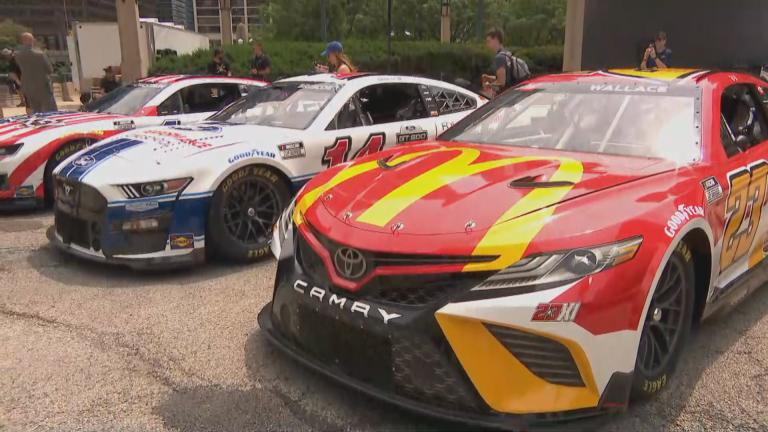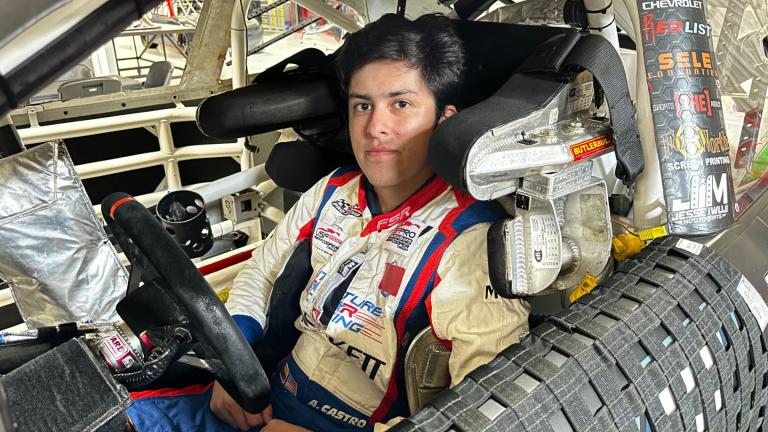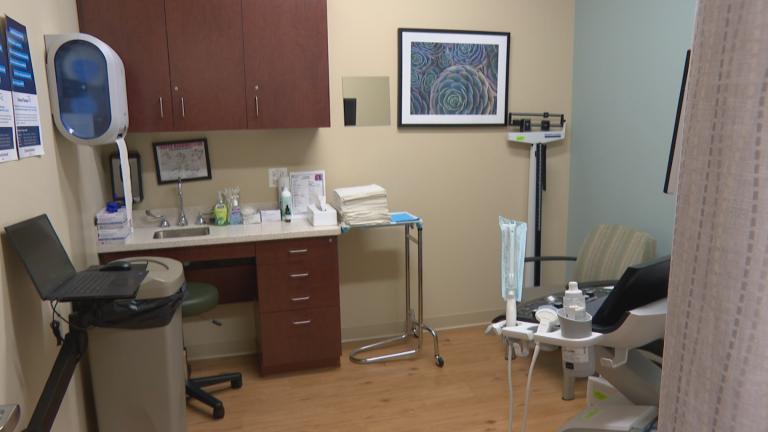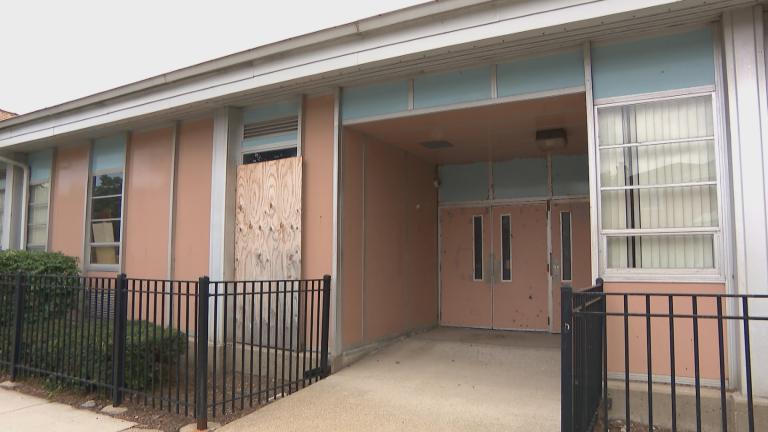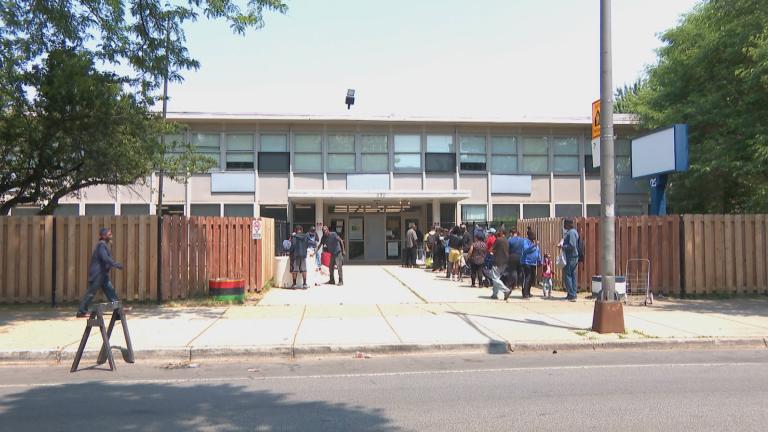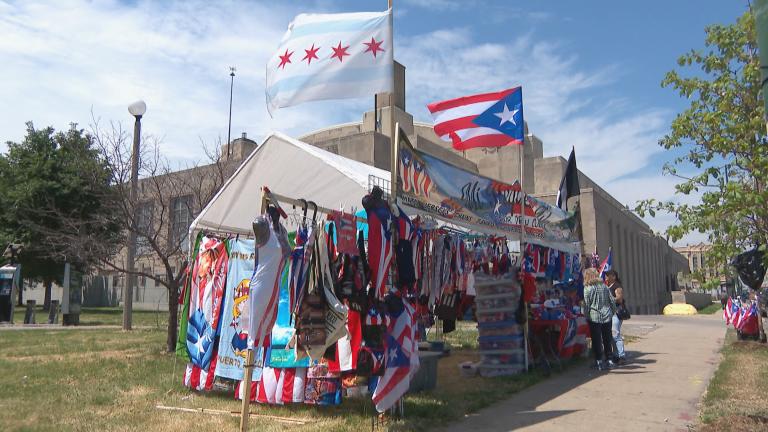Located on the far southeast corner of the city, East Side is known to be a blue-collar, working-class community with a rich industrial history. It’s connected by the Calumet River and Lake Michigan.
The community got its name for being located on the east side of the Calumet River, rather than for being on the east side of Chicago.
Interactive map: More from our community reporting series
Its history dates back decades, with the arrival of steel mills that drove hundreds of immigrants to the area to work. But the steel mills shut down in the 1980s. Longtime resident Rosemary Arias shared about the economic toll that had on the community.
“Once the steel mills left, everything else started falling apart, I guess you can say,” Arias said. “There were always people in need. Single mothers, kids just trying to get by on their own.”
Arias currently runs and operates the Southeast Side of Chicago Food Pantry along 114th street. She started at the pantry three years ago, where she said her team serves up to 160 families every Wednesday.
COVID-19 has had a big impact on the community and the need continues to grow. She also runs a mobile food pantry every third Friday of the month and currently operates on donations.
“We have people who have full-time jobs, but still can’t meet their family’s needs so they come here,” Arias said. “Some are homeless. I’ve seen so many different factions and it hurts to see the community like this.”
Residents described the neighborhood as a working-class and family-oriented community. It’s a melting pot of many nationalities.
Today, the neighborhood is about 80% percent Latino.
Immar Ayala, the owner of Chi Burger Babi shared that his mother fled El Salvador in the seventies and settled in East Side.
Ayala started as a food runner and worked his way around kitchens in Chicago. A year ago, he opened his own restaurant where he does it all.
“I’m always thinking about her and the hard work and effort,” Ayala said in reference to his mother. “The American dream that everyone keeps talking about. It might sound like a cliché, but it’s true. I grew up in this neighborhood and I came from this neighborhood. I wanted to put this place in the neighborhood, nowhere else.”
Similarly, East Side resident Ines Ornelas had a passion for this neighborhood and opened a business called Tochi, La Diosa during the pandemic.
It has since become a collective space for other businesses to operate out of.
“I currently have 12 business owners from the community,” Orenlas said. “I give them a space for their merchandise. We have painting parties, bingo, workshops. I’m going to invite artists from the community to paint a mural within the store.”
Ornelas is also a long-time Chicago Public Schools elementary teacher in East Side.
“Because I am a teacher, I wanted to build community. As an educator, you never stop," Ornelas said. "In the beginning, when everything was going on, all my students were coming in (to my store) ... their vision of what can be changed coming from such a small neighborhood.”
Video: Watch our full interview with Ines Ornelas
Today the community is home to a bustling port along the Calumet River, and has multiple bridges and factories. It’s home to South Shore Recycling, among other industrial companies.
Activist Oscar Sanchez grew up in East Side and said the community faces multiple health challenges.
“We have to be talking about what happens when you live in an industrial corridor. There’s many different factors that affect you,” Sanchez said. “There are heat waves, there is damage to infrastructure and flooding. There’s an environmental burden and a cost. We have high respiratory issues, high rates of cancer and we see this in our community members.”
Oscar Sanchez works at Southeast Environmental Task Force, an organization driven by bringing environmental awareness and education to the community.
He said their work consists of fighting against racial disparities while also getting the youth involved.
“We co-founded the youth alliance because we felt there was a negative stigma from community members,” Sanchez said. “When you see your community as a dumping site and you say, ‘Well this is a dumping site there’s nothing good here on the Southeast Side.’ That creates mental health barriers. You see many community members saying, ‘Hey I’m going to fight the stigma, I’m going to instill my passion here in the community.'"
The community has also been getting ready to celebrate the return of the Chicago Labor Day Parade for the first time since COVID-19.
The Chicago Federation of Labor collaborated with the Ald. Susan Sadlowski Garza’s (10th Ward) office to work together to organize the celebration.
President Bob Reiter said they’ll be recognizing hundreds of union members.
“We’re super excited,” Reiter said. “The parade kicks off at noon this Saturday, and at 1 p.m. the Eddie Fest. It will feature a union band called Union Rules. It’s made up of union musicians from the Chicago Federation of Musicians. We’re gonna have other entertainment, including bouncy houses, family activities … It’s going to be incredible.”
Garza brought the parade back a few years ago. They have almost 90 units in the parade this year.
“I’m looking forward to celebrating our working class all across the city,” she said. “When I was a kid growing up, we had nine steel mills here. Every year, Labor Day was the biggest celebration in the 10th Ward that we ever saw. We had 125,000 steel workers in the district here and everyone was in the parade. Once the mills closed, the parade stopped. When I took office in 2015, we brought the parade back in 2016 … it brings back a sense of community to celebrate the men and women who work tirelessly for this community.”
Video: Watch our full interview with Susan Sadlowski Garza
“Chicago Tonight” is expanding its community reporting. We’re hitting the streets to speak with your neighbors, local businesses, agencies and leaders about COVID-19, the economy, racial justice, education and more. See where we’ve been and what we’ve learned by using the map below. Or select a community using the drop-down menu. Points in red represent our series COVID-19 Across Chicago; blue marks our series “Chicago Tonight” in Your Neighborhood.Community Reporting Series

